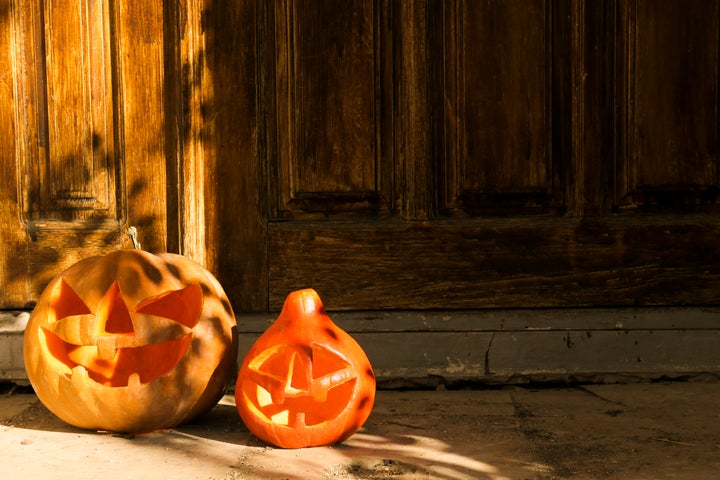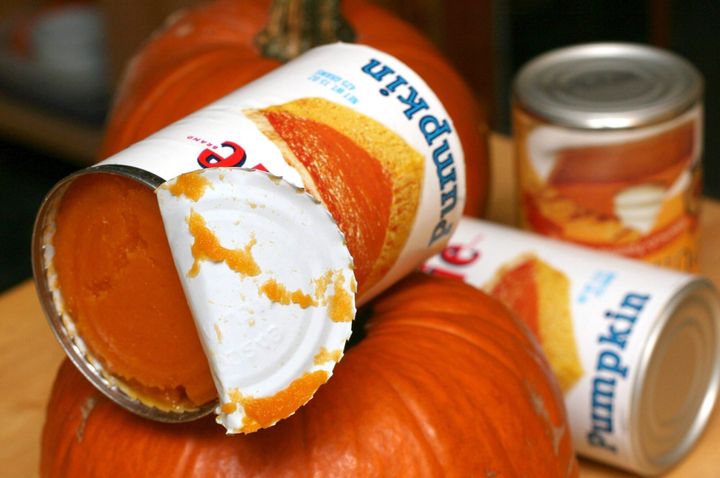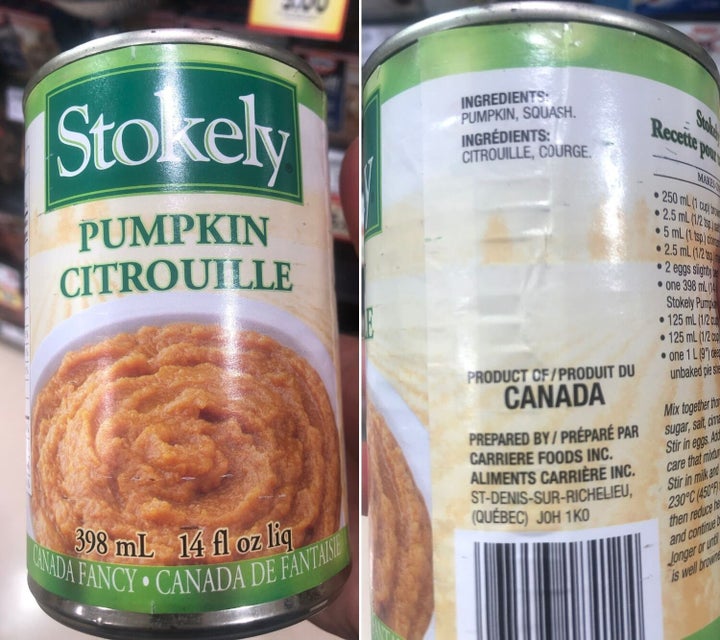As October comes to a close, it’s time to pay tribute to the unofficial mascot of the month: the pumpkin.
From pumpkin spice (delicious, underrated) to pumpkin pie (delicious, accurately rated) to pumpkin wine (probably terrible, but definitely worth a try), we love celebrating spooky season by ingesting as much pumpkin as we can get our hands on.
But brace yourself for the spookiest news of all: much of what’s sold as canned pumpkin is actually ... squash.
Let’s start with the official guidelines. Health Canada requires that products sold as canned “pumpkin” are “common field pumpkins of golden-fleshed varieties” and “may contain squash.”
So that puréed mix might include some squash along with your pumpkin. Sure. But what exactly is a “common field pumpkin of a golden-fleshed variety?”
It turns out that even the term “pumpkin” is nebulous, and likely refers to something quite different than what you carve into a jack-o’-lantern.

In an article in The Atlantic about the American canned pumpkin industry, Cindy Ott, the author of Pumpkin: The Curious History of an American Icon, said that the words “pumpkin” and “squash” were used interchangeably until the 19th century.
Since then, when it’s time to distinguish them from each other, it’s not always done in a consistent way. Gardening bible Heirloom Gardener says there’s “only one species of ‘true’ pumpkin, the Cucurbita pepo.” But as The Atlantic notes, many other sources are more broad with the definition. The Encyclopedia Britannica says pumpkin can be the fruit of a “variety” of squash, while Merriam-Webster defines it as either Cucurbita pepo, Cucurbita maxima, Cucurbita moschata, or Cucurbita mixta (also called the Cucurbita mixta argyrosperma.)
The Canadian Farmer’s Almanac, on the other hand, stays out of the controversy altogether by simply stating that “all varieties of squash and pumpkins belong to the genus Cucurbita within the large plant family Cucurbitacae.”
And the Oxford Canadian dictionary says it’s “any of various plants of the genus Cucurbita, esp. Cucurbita maxima.” Who to believe?!

None of the canned pumpkin brands we could find contain either Cucurbita maxima or Cucurbita pepo. One of the most common grocery store pumpkin brands is the Winona, Ont.-based E.D. Smith, which sells both pure puréed pumpkin and pumpkin pie filling.
According to the information listed on its website, the sole ingredient in its Pure Pumpkin filling is Dickinson pumpkin. Dickinson is oblong and usually paler than the round, bright-orange gourd you probably picture when you think about a pumpkin.
And despite the pumpkin in its name, it’s generally considered a squash — although that, too, is contentious. Both pumpkins and squash are gourds, but the Dickinson “pumpkin” is part of the Cucurbita moschata species, an entirely different species than Cucurbita pepo, a group which includes “true pumpkin.”
As the Ontario government describes it, “a pumpkin is carved, a squash is cooked.”

In E.D. Smith’s “pumpkin pie filling,” the first ingredient listed is simply “pumpkin.” The kind of pumpkin isn’t specified.
We didn’t have much luck figuring out what’s in other canned pumpkin brands, either.
The ingredients on Loblaws’ No Name “100% pure pumpkin” are listed as, simply, “100% pure pumpkin.” The company did not respond to HuffPost Canada’s question about what kind of pumpkin is included.
Neither did Bonduelle, the Quebec-based company that owns Stokely, which also sells canned pumpkin. The ingredients listed on the can are pumpkin and squash, but a company representative couldn’t specify what type of pumpkin or squash were included.
American company Farmer’s Market, which also sells in Canada, didn’t respond to a request about their Organic Pumpkin, either.
As Heirloom Gardner has previously pointed out, Libby’s — the highest-selling canned pumpkin brand in the U.S. — is also made of Dickinson pumpkin, like E.D. Smith. Again, Dickinson pumpkin is also known as squash.

This isn’t actually the worst news in the world
This classification oddity didn’t happen because the universe wanted to screw you over. For the most part, jack-o’-lantern pumpkins aren’t actually all that great to eat: they’re 90 per cent water, and often turn out bland and insipid when cooked. Dickinson, meanwhile, is “luscious, creamy, and naturally sweet, much like butternut squash,” Forbes reports.
Several years ago, according to a New York Times taste test, butternut squash made the most appetizing pie. A sugar pumpkin, meanwhile, was “neither sugary sweet nor very tender.” And cheese pumpkin, the other option you often see listen in pumpkin pie recipes, was “granular and watery,” with “a bright, fresh flavour that would be great for savoury dishes but isn’t what you want in pie.”
So, enjoy your jack-o’-lantern and enjoy your “pumpkin” pie — but enjoy them for their own merits.
Also on HuffPost: